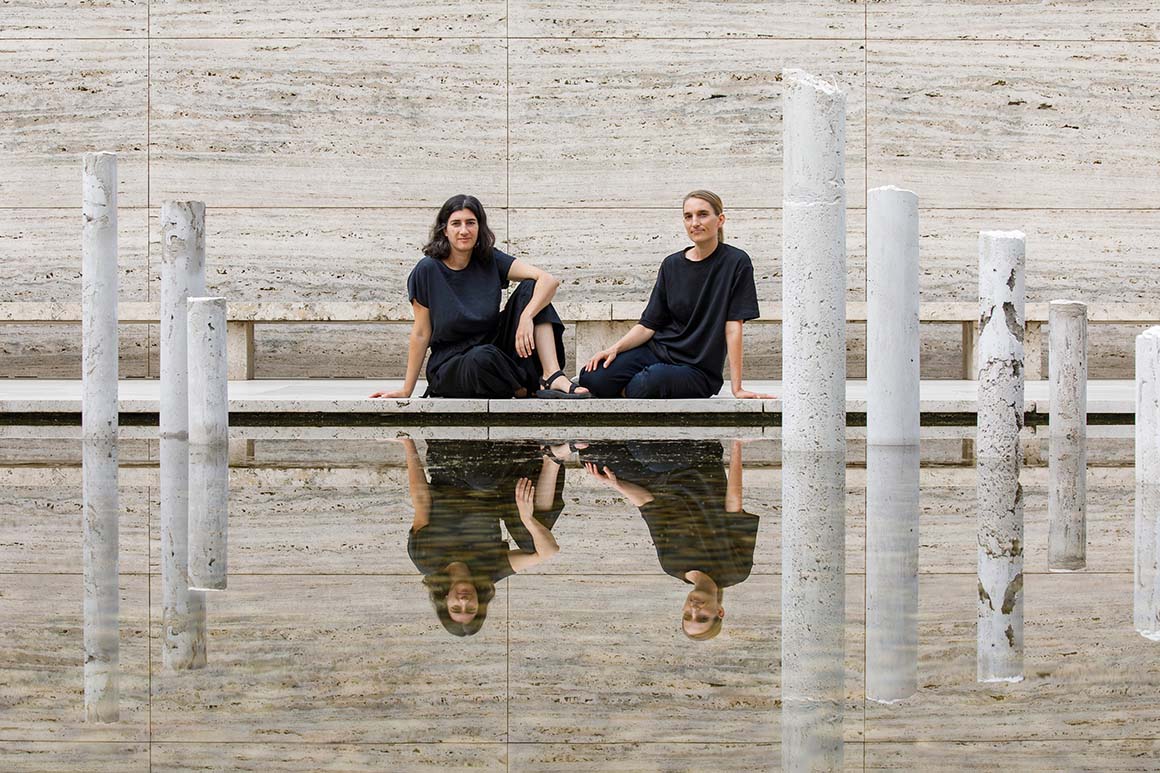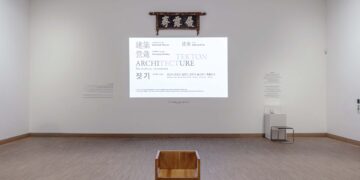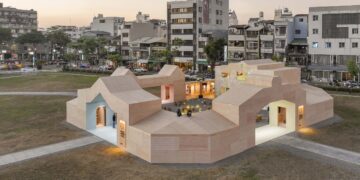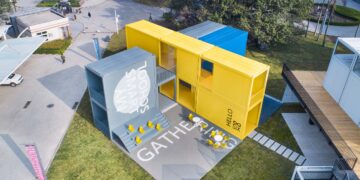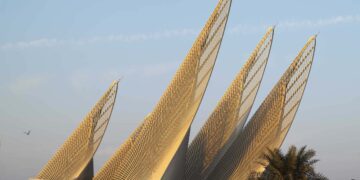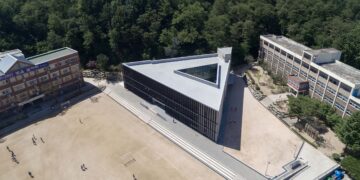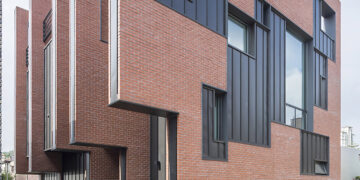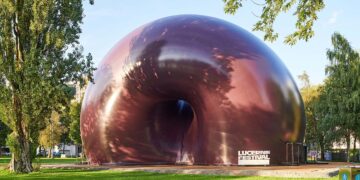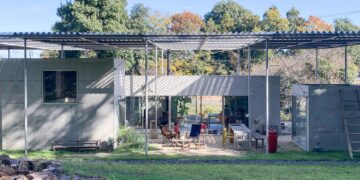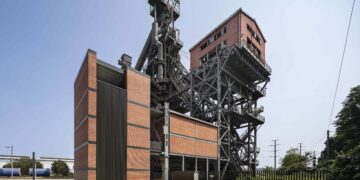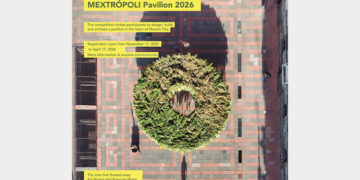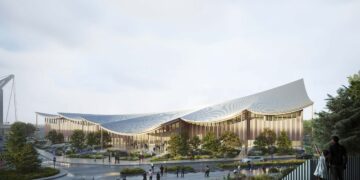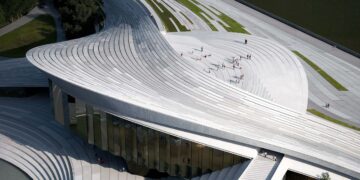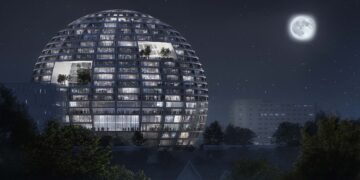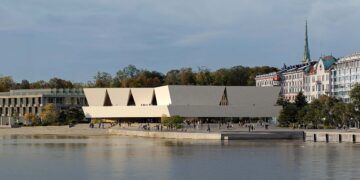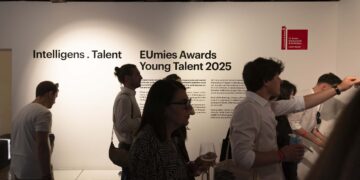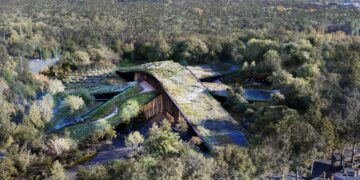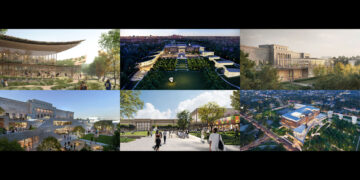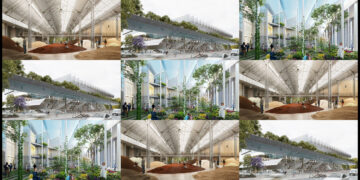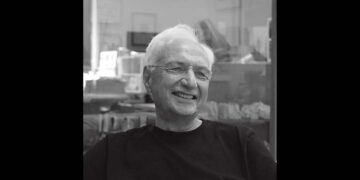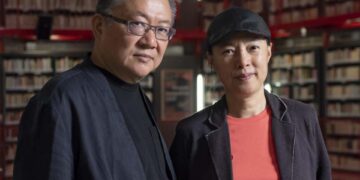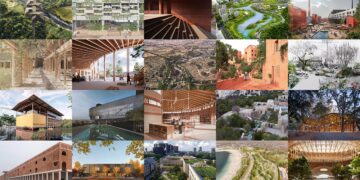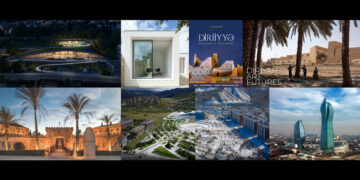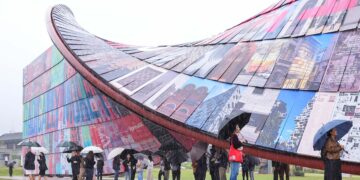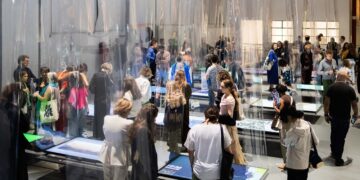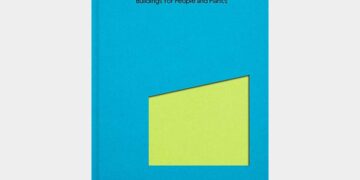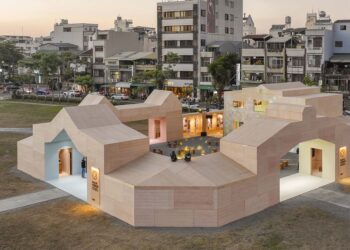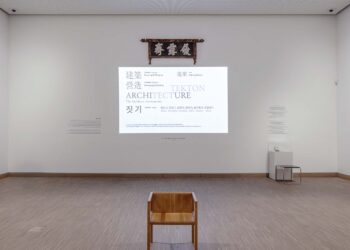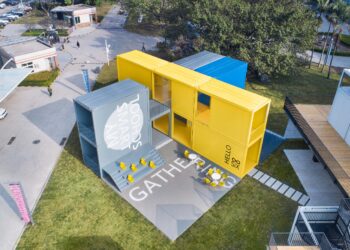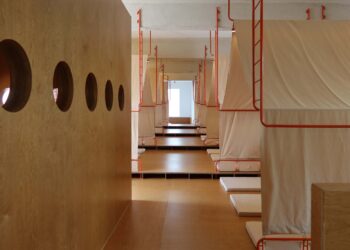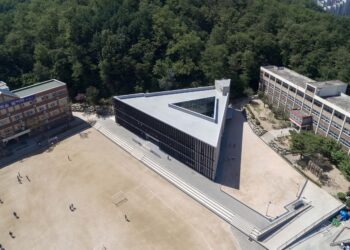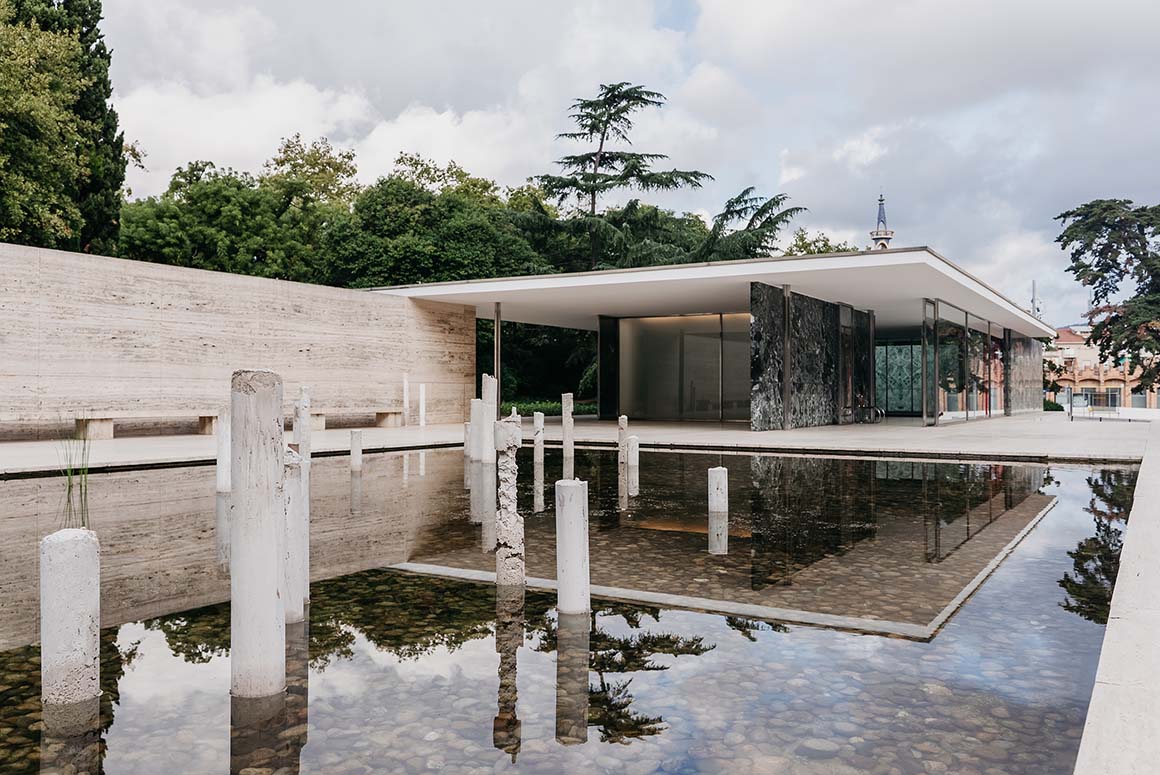
At the Mies van der Rohe Pavilion in Barcelona, a collaborative exhibition by visual artist and performer Anne Glassner and sculptor Marit Wolters runs until October 5. Marit Wolters‘ sculptures occupy the space as presences, constantly engaging in dialogue with it while exploring the potential of materials and imbuing them with value. Anne Glassner’s performances are based on observing events that appear repeatedly in everyday life, traversing the boundaries between art and life, fiction and reality. Their collaboration follows exhibitions held in 2021 and 2022 at Villa Tugendhat in Brno, Czech Republic, and this time at the Mies van der Rohe Pavilion, they combine their respective languages to present a work that constructs dialogues between architecture and nature, public and private, observer and observed, the ordinary and the extraordinary. This is ultimately an exploration of presence and absence.
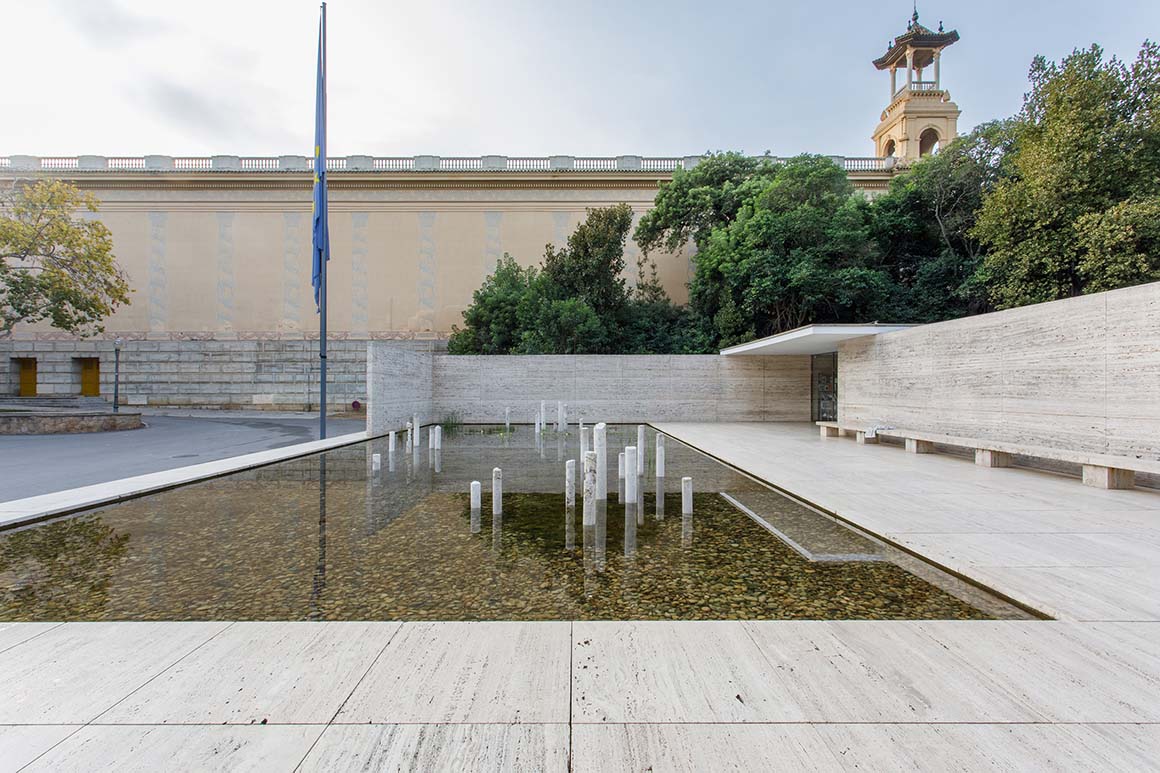
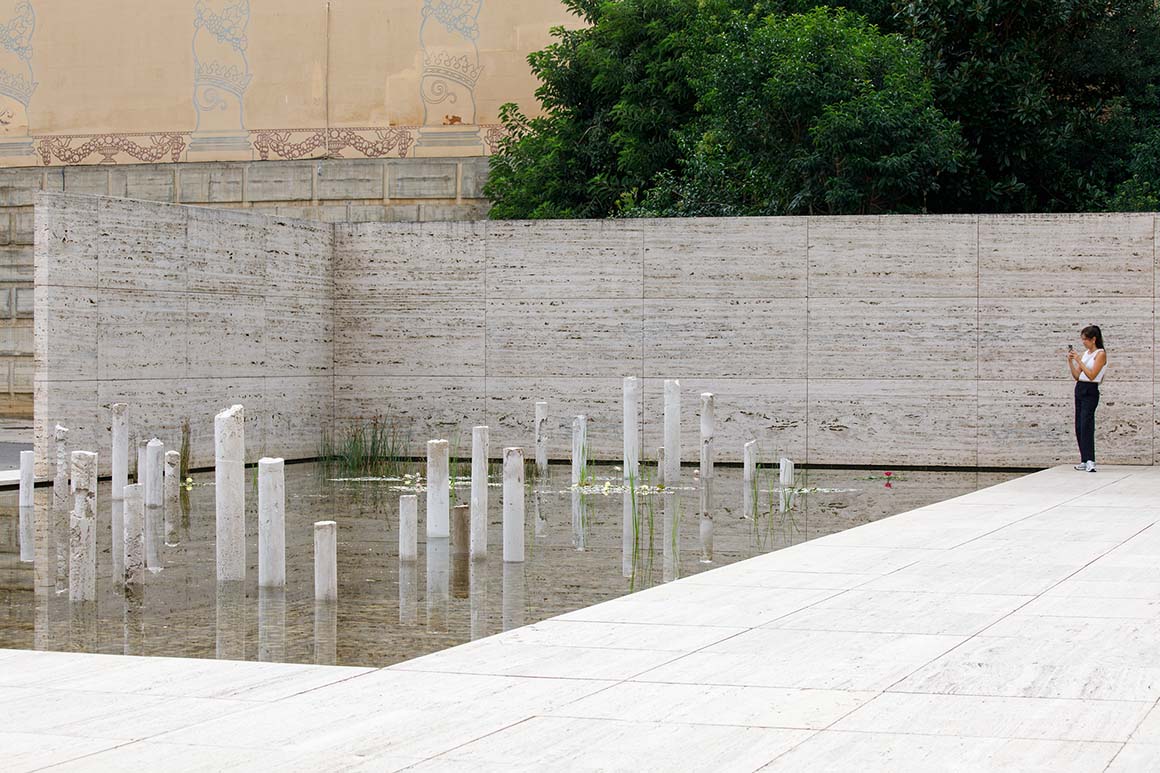
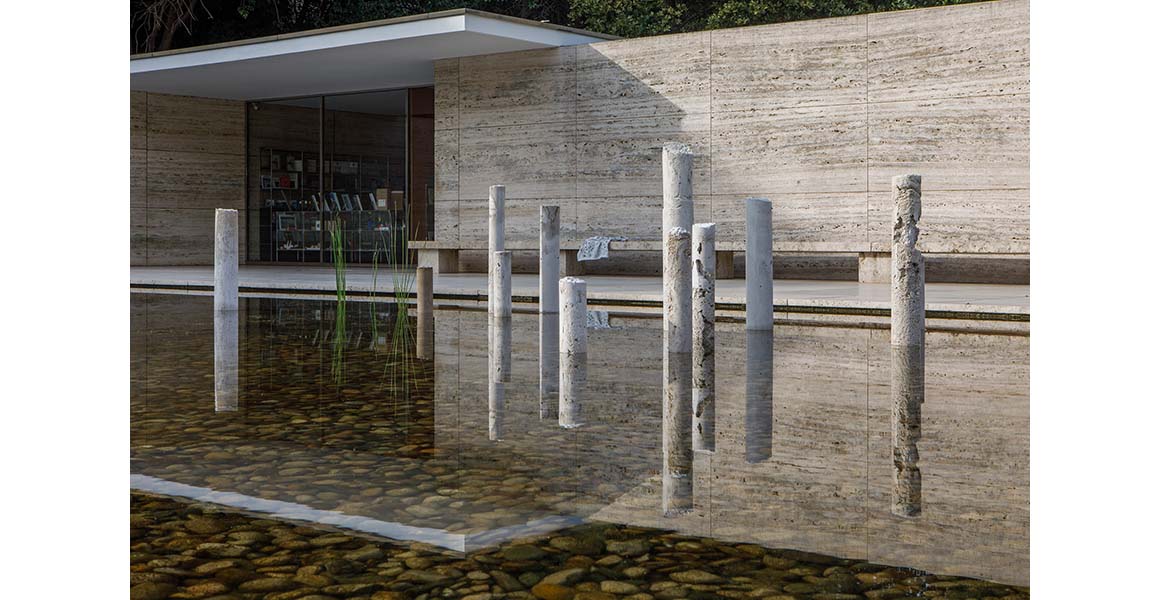
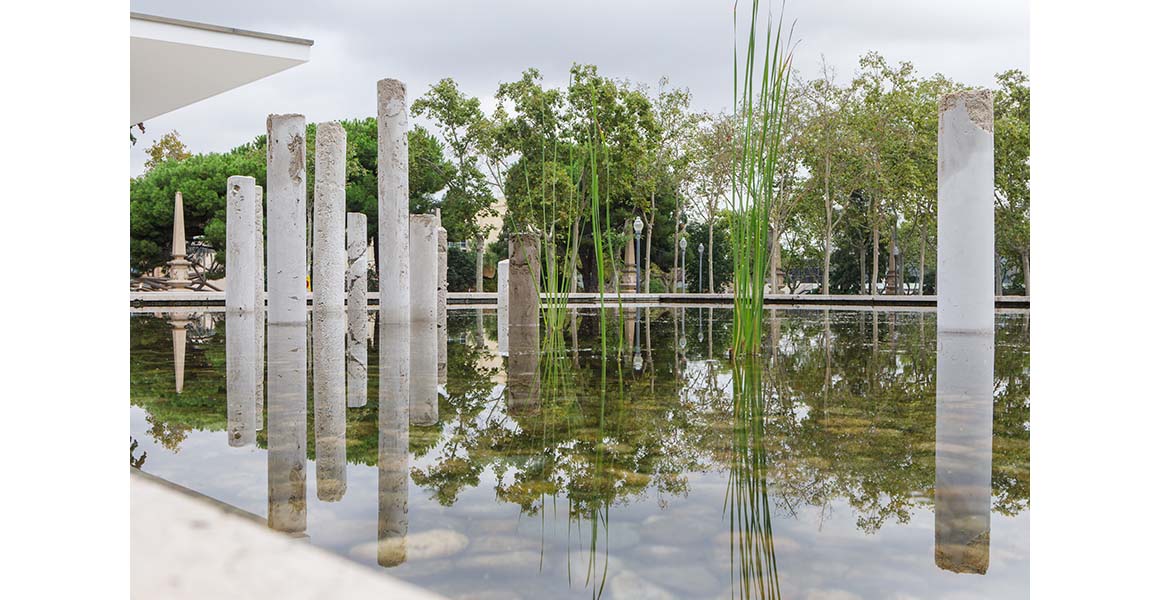
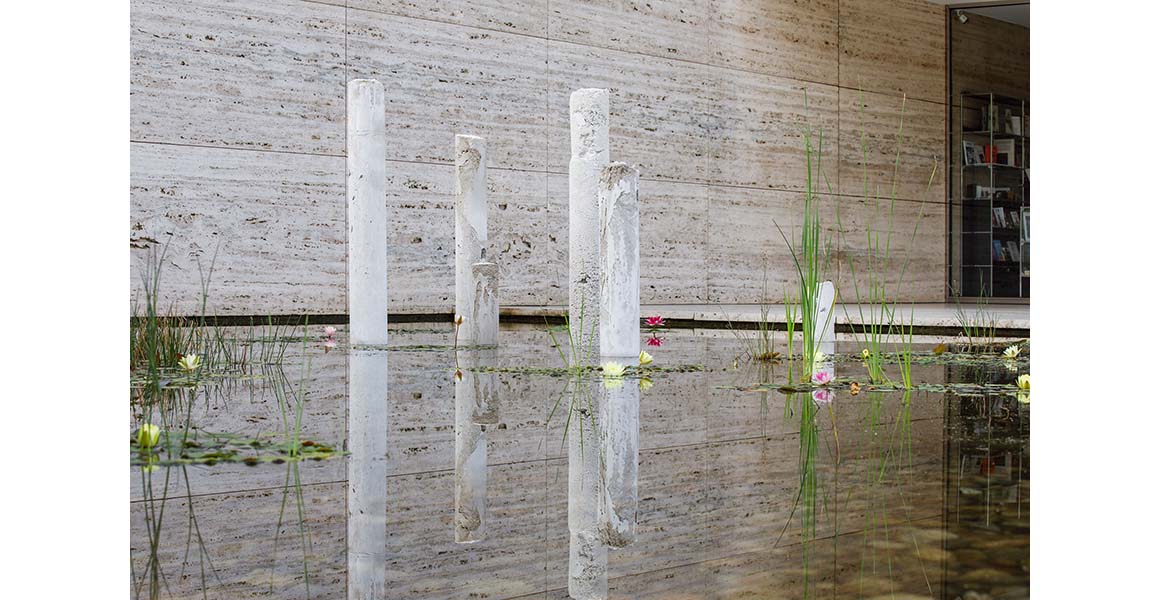
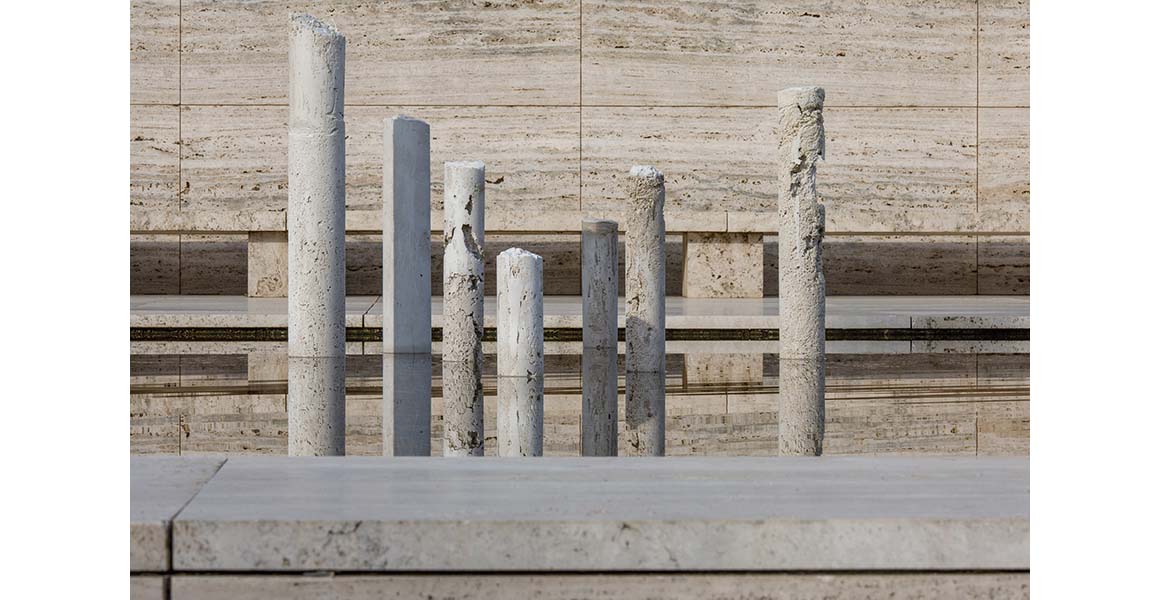
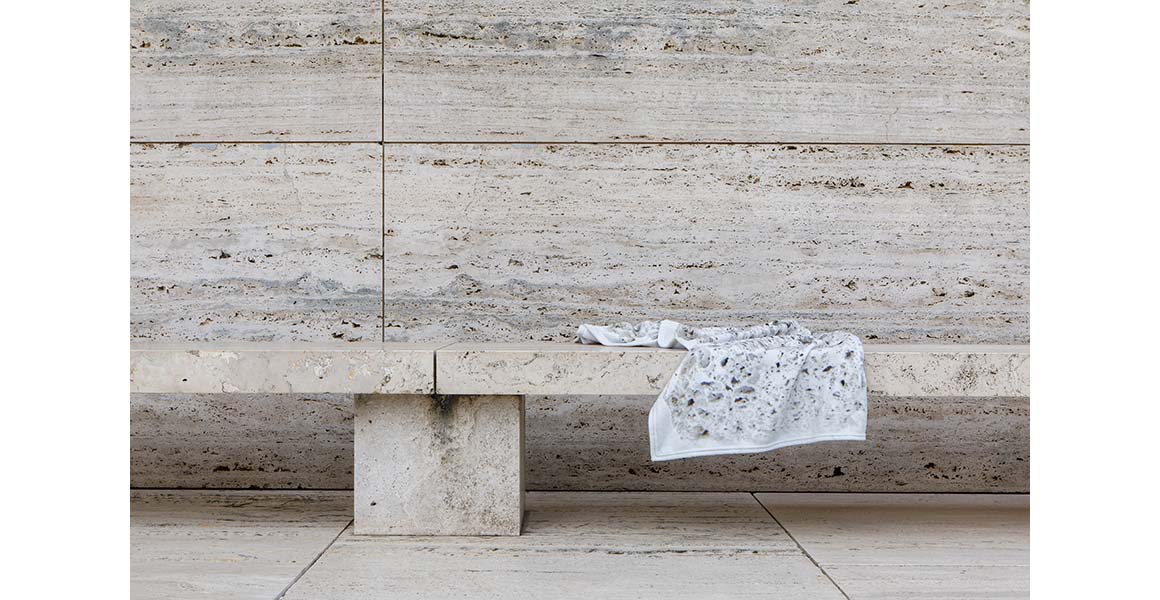
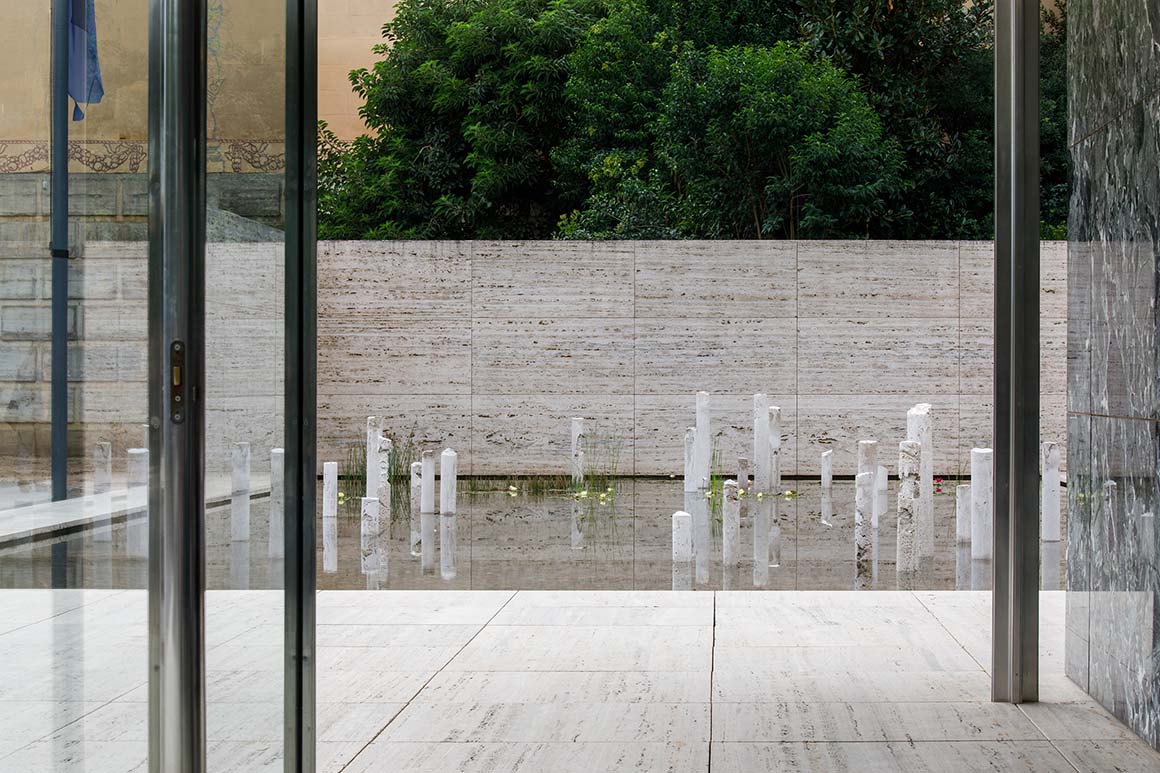
Wolters has installed a series of concrete sculptures made using the water from the Pavilion‘s pool. The sculptures are integrated into the Pavilion and visually evoke the surrounding travertine marble. Glassner’s performances summon a sense of everyday life re-enacted in unfamiliar ways within the Pavilion. The two artists, wearing camouflage costumes that visually merge with the spatial background, engage in everyday actions such as sitting, walking, looking, lying down, drinking, eating, and playing, which are repositioned within the context of the Pavilion. In the process, the visitors themselves become part of the work, their presence disrupting or redirecting the performers‘ movements. Transferring private everyday actions into a public space such as the Pavilion becomes a way of recovering intimacy.
Through these interventions, Wolters and Glassner make visitors aware of how even the simplest actions—watering plants or shifting posture—are connected to architecture.
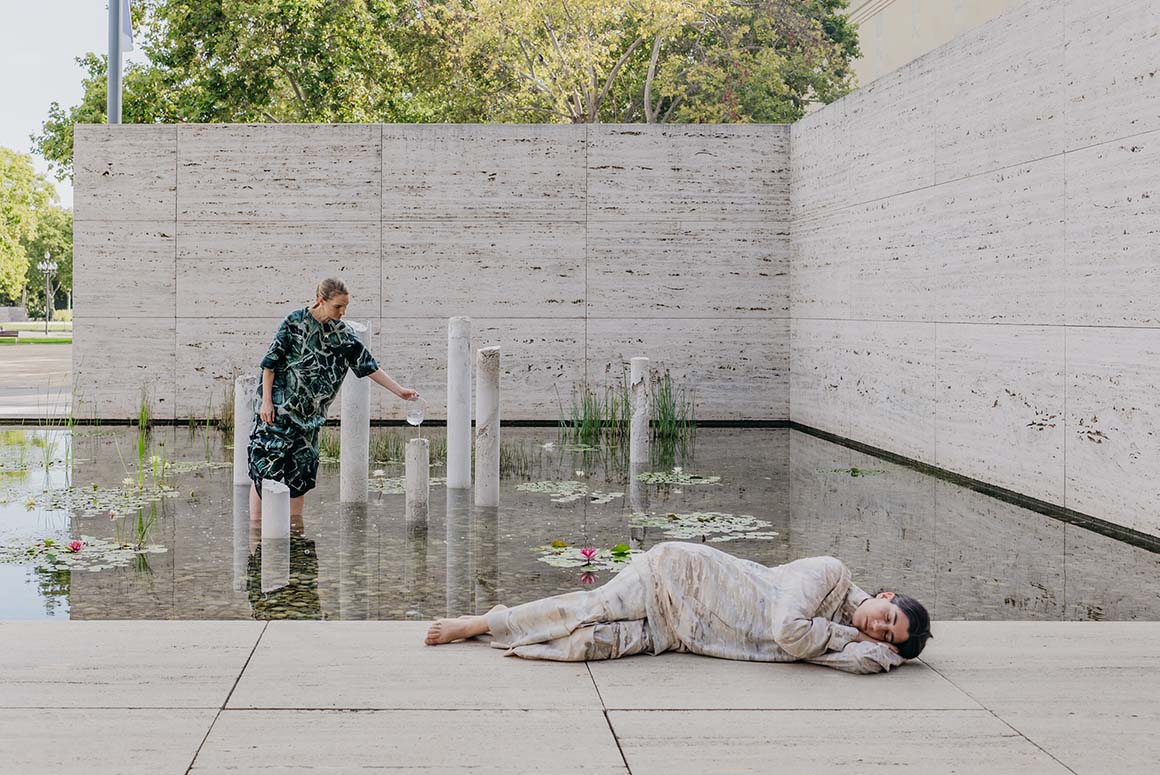
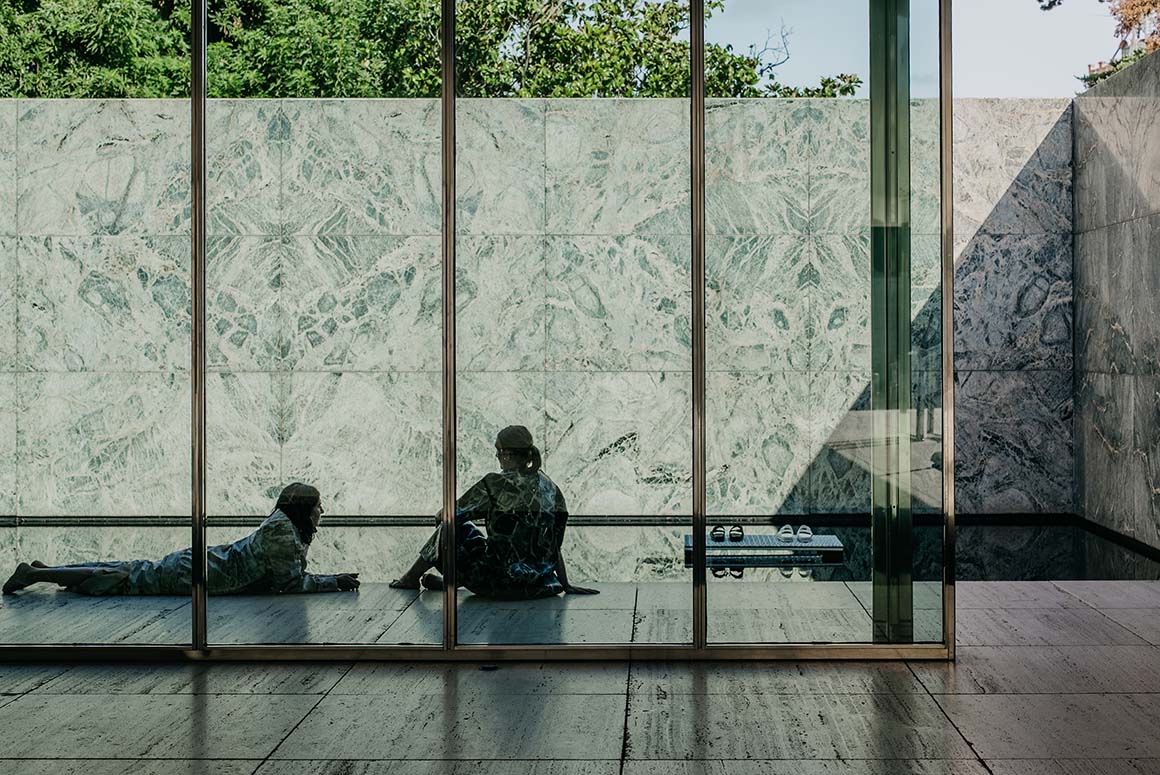
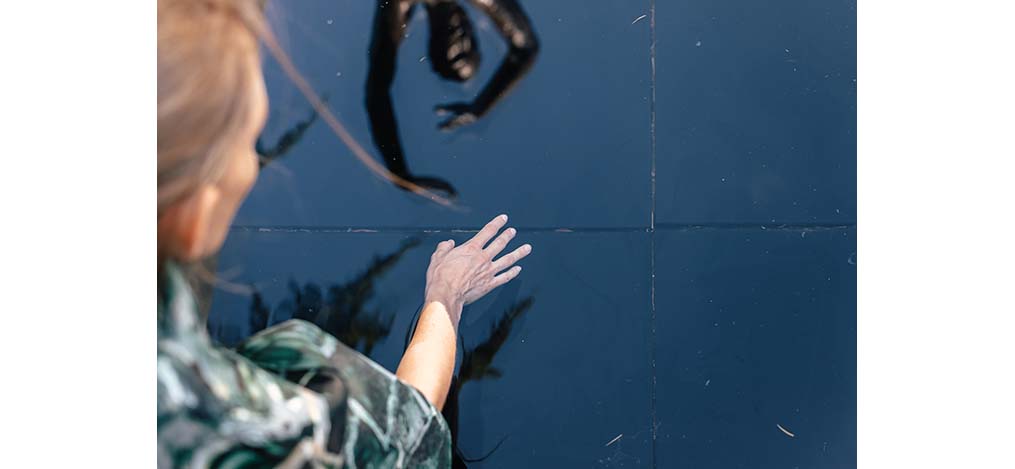
The Mies van der Rohe Pavilion is an open architecture that originated from the concept of a single-family house. Built as a reconstruction of the German Pavilion presented by Mies van der Rohe and Lilly Reich at the 1929 Barcelona International Exposition, it is characterized by an unfinished state that leaves gaps instead of fully enclosing the exterior. As a result, sightlines intersect freely, and there are few corners that can serve as hiding places. Its basic structure resembles that of Villa Tugendhat, also designed by Mies van der Rohe: columns form the primary framework, while walls fold around them like skin. The difference is that the Villa includes private bedrooms. Within the Pavilion, where private and public, interior and exterior, architecture and nature interweave, Wolters and Glassner‘s work explores the possibility of multiple realms converging in a single space. In doing so, they prompt reflection on the dissolution of boundaries and the interplay between revelation and concealment, absence and presence, art and life.
This project is presented as part of Barcelona Gallery Weekend and SWAB Barcelona Art Fair, and is co-organized with Phileas – The Austrian Office for Contemporary Art, Bildrecht – Austria‘s visual arts copyright collecting society, the Federal Ministry for Housing, Arts, Culture, Media and Sport of Austria, the Austrian Cultural Forum Madrid, and Hangar – Center for Artistic Production and Research.
